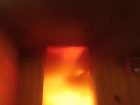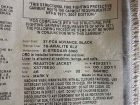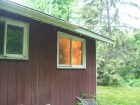
Features
Training
Back to Basics: March 2016
Rapid fire development (RFD) is a concern that all firefighters face whether they are undertaking engine-company or truck-company functions. RFD refers to occurrences such as flashover, backdrafts and smoke explosions, and can take place at any structure, at any time of day, anywhere in the country.
February 24, 2016
By
Mark van
Flashover is a common RFD that can catch firefighters off guard as they operate inside structures. I recently watched a video in which a firefighter in another country was trapped in a third-storey bedroom of an apartment during RFD. The firefighter had no hoseline to help him and he was trapped between a window and a room that flashed over. The firefighter jumped from the window with his gear on fire.
Flashovers are a very real possibility for all front-line firefighters; all firefighters should be trained about flashover and how it can be prevented or avoided.
Flashover is the simultaneous ignition of everything within a room. A flashover occurs when hot gases – the black smoke from unburned particles of combustion – rise to the ceiling and spread out across the walls. As the gases spread, they heat up the items within the room such as the paint on the walls, the furnishings, clothing, mattress and flooring material. Once the contents are heated to their ignition temperatures, rapid fire development occurs and everything becomes a big ball of fire.
The temperature range for ignition of all contents and unburned products of combustion in a room is between 540 C and 820 C (1,000 F and 1,500 F). These temperatures are not viable for firefighter survival, let alone an occupant of the residence. Firefighters need to recognize the signs of impending RFD prior to it occurring to avoid getting caught in the subsequent flashover. Firefighter-survival skills can only do so much to help firefighters once they are caught in RFD; the best defence against this is to avoid RDF situations all together or aggressively cool the area in question.
The heat spread from RFD is radiant, which is why black smoke is dangerous to firefighters and needs to be aggressively cooled. The unburned particles of combustion in the hot, black smoke, once mixed with a fresh air supply will eventually turn into a ball of fire.
Firefighters are more often dangerously exposed to RFD today than ever before.
- Better gear protects firefighters more nowadays, so that crews are able to enter deeper into structures. Modern gear has properties that protect from heat longer, which prevents firefighters from feeling the rapid buildup of heat. Gear can be assembled with many different options such as outer-shell material, inside-liner material and vapour-barrier material (see photo 1). Each type of material has different thermal-protection properties as well as heat resistance and protection. Depending upon what type of gear firefighters wear, they may not feel the heat until it is too late to act.
- Fire crews are being notified about fires quicker than before. Faster dispatch means firefighters often arrive at a structure fire before RFD has occurred. If a structure is in the stages of fire development, a fire department may arrive while the fire is under ventilation-limited conditions – the black smoke cannot get out and is contained. Those firefighters on scene are exposed to the rapid heat buildup and flashover precursor.
- Tying in with the previous point, houses built in the last 10 years are airtight. The push for energy efficiency and conservation has resulted in houses that do not breathe naturally and do not allow black smoke to escape; this produces a vent-limited building and situation for the arriving crew. A modern house will have an air exchanger built in as part of the local building code that allows air to circulate in and out mechanically.
- With the advancement of technology and chemistry, houses are filled with highly combustible furnishings. When modern furniture is exposed to high heat radiating from a nearby fire and unburned particles of combustion, it starts to break down and contribute to the overall heat-release rate of the room. Once these furnishings ignite, they produce an extreme heat-release rate, which creates RFD. An upholstered chair will release two megawatts of heat – the same heat-release rate at which a flashover will occur.
In the May issue, we will further examine RFD and learn how firefighters can aggressively cool the fire box to remove the potential for a flashover.
Mark van der Feyst has been in the fire service since 1999 and is a full-time firefighter in Ontario. Mark teaches in Canada, the United States and India and is a local-level suppression instructor for the Pennsylvania State Fire Academy and an instructor for the Justice Institute of BC. He is also the lead author of Residential Fire Rescue. Email Mark at Mark@FireStarTraining.com
Print this page


